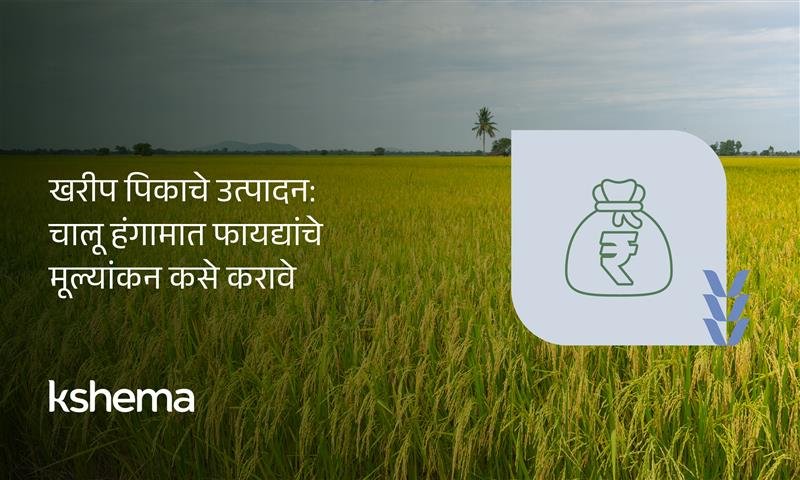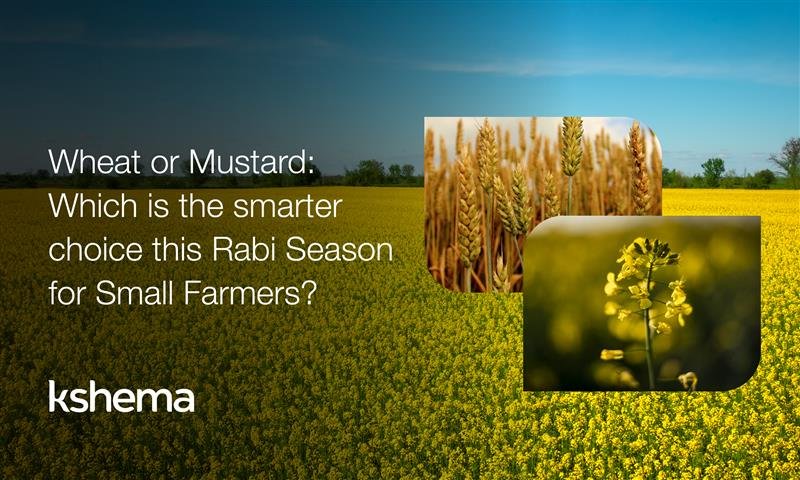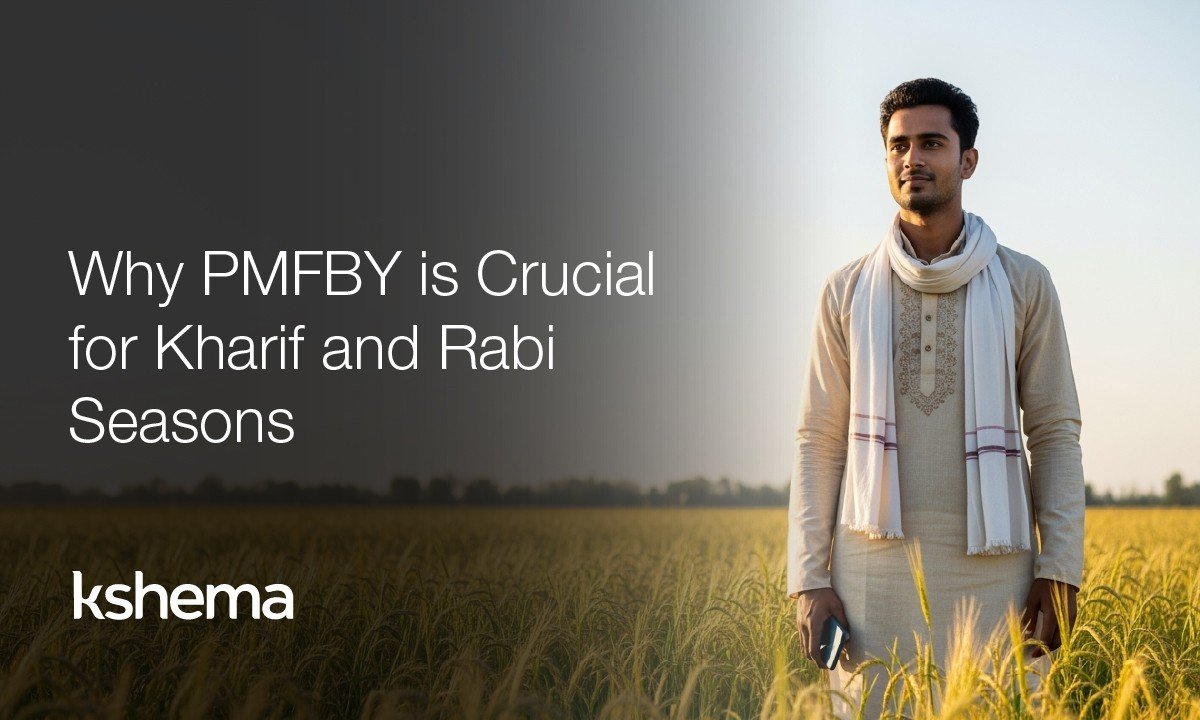How to Prepare Your Field for a Successful Rabi Crop Season in India
Summary: This guide outlines 8 essential steps to prepare your field for the Rabi crop season in India, including soil testing, irrigation planning, seed selection, and crop insurance. Ideal for farmers seeking higher yield and risk protection.
As temperatures dip and skies clear after the monsoon, Indian agriculture shifts gears. The Rabi crop season is more than a weather change—it’s a strategic opportunity for farmers to diversify income, optimize irrigation, and grow crops that thrive in cooler climates. Unlike the Kharif season, which relies on rainfall, the Rabi Crop Season in India depends on residual soil moisture and controlled irrigation. Proper preparation during this time can significantly impact yield, quality, and profitability.
1. Understand Your Agro-Climatic Zone
Before you begin, it’s important to understand the agro-climatic conditions of your region. The Rabi season typically spans from October to March. Exact sowing and harvesting windows vary across states. For example:
- Northern India: Wheat and mustard dominate, with sowing starting in late October.
- Central India: Chickpeas and lentils are common, with sowing in early November.
- Southern India: Rice and millets are grown in irrigated zones.
Knowing your zone helps you choose the right crop and sowing time, ensuring better adaptation to local climate and soil conditions.
2. How do I test and improve soil for Rabi crops?
Healthy soil is the foundation of any successful crop cultivation. Start with a soil test to assess pH levels, nutrient content, and organic matter. This helps determine the right fertiliser mix and amendments needed.
- Ideal pH: Most Rabi crops prefer a pH between 6.0 and 7.5.
- Nutrient balance: Ensure adequate nitrogen (N), phosphorus (P), and potassium (K), along with micronutrients like zinc and boron.
- Organic matter: Incorporate compost or farmyard manure to improve soil structure and moisture retention.
Timely soil correction ensures optimal root development and nutrient uptake during the growing season.
3. How should I clean my field after Kharif season?
Post-Kharif, fields are often covered with leftover stubble and weeds. Clearing them is essential to prevent pests and disease carryovers.
- Remove crop residues: Use mechanical shredders or manual methods to clear stubble.
- Weed control: Apply pre-sowing herbicides or practice manual weeding.
- Avoid burning: Stubble burning harms soil health and contributes to air pollution. Instead, consider mulching or composting residues.
Clean fields reduce competition for nutrients and create a favourable environment for Rabi crops.
4. What tillage methods are best for Rabi land preparation?
Proper tillage improves soil aeration, drainage, and root penetration. Depending on your crop and soil type, choose the right method:
- Deep ploughing: Ideal for wheat and barley to break hardpan layers.
- Harrowing: Helps in levelling and breaking clods.
- Bed preparation: Raised beds are suitable for pulses and vegetables, improving water management.
Ensure the field is levelled to prevent waterlogging and facilitate uniform irrigation.
5. What irrigation methods work best for Rabi crops?
Unlike the rain-fed Kharif season, the Rabi crop season relies on planned irrigation. Assess your water sources and design an irrigation schedule.
- Check water availability: Borewells, canals, and tanks should be operational.
- Choose irrigation methods: Drip and sprinkler systems conserve water and improve efficiency.
- Schedule irrigation: Critical stages like germination and flowering require timely watering.
Efficient irrigation ensures consistent growth and reduces the risk of drought stress.
6. Which seeds are ideal for Rabi season in my region?
Choosing the right seed variety is key to maximising yield and resilience. Opt for certified seeds suited to your region and resistant to local pests and diseases.
- High-yielding varieties: Look for government-approved or locally adapted hybrids.
- Seed treatment: Treat seeds with fungicides and biofertilisers to prevent soil-borne diseases and enhance germination.
- Sowing depth and spacing: Follow recommended guidelines for each crop to ensure optimal plant population.
Healthy seeds lead to uniform germination and robust crop stands.
7. How can I prevent pests and diseases during Rabi season?
The Rabi season is relatively less prone to pests than Kharif, but vigilance is still necessary.
- Crop rotation: Avoid planting the same crop repeatedly to break pest cycles.
- Biological control: Use neem-based products or beneficial insects to manage pests.
- Monitoring: Regular field scouting helps detect early signs of infestation.
Preventive measures reduce the need for chemical interventions and protect crop health.
8. Insurance and Risk Management
Despite favourable conditions, risks like floods, earthquakes, or animal attacks can impact yields. Protect your investment with crop insurance app.
Here are the crop insurance policies we suggest to support farmers during the Rabi Crop Season in India, ensuring peace of mind and financial security:
- Kshema Sukriti: A customisable plan letting you choose 2 out of 8 perils for 100+ crops, starting at INR 499/acre.
- Kshema Prakriti: A comprehensive plan covering all 8 perils, ideal for farmers seeking full protection for 100+ crops.
Final Thoughts
Preparing your field for the Rabi crop season is a blend of science, tradition, and timely action. From soil testing to irrigation planning and insurance, each step plays a vital role in ensuring a successful harvest.
With the right preparation, farmers can make the most of the cooler months and reap the rewards of a well-managed Rabi season.
Get tech-enabled support through the Kshema app.
For more region-specific guidance on sowing, soil health, and pest control, refer to this expert resource:
👉 Rabi Crop Planning for Winter Harvests – Krushi Vikas
Frequently Asked Questions About Rabi Crop Season in India
Q1. When does the Rabi crop season start in India?
A. The Rabi season typically starts in October–November and ends in March–April.
Q2. Which crops are best for the Rabi crop season?
A. Wheat, mustard, barley, chickpeas, and lentils are the most popular Rabi crops.
Q3. Why is irrigation important for Rabi crops?
A. Unlike Kharif crops, Rabi crops rely on controlled irrigation as rainfall is minimal during winter.
Q4. How can farmers improve soil health before Rabi sowing?
A. Conduct soil testing, add organic matter, and balance nutrients for better crop growth.
Q5. Are Rabi crops covered under crop insurance?
A. Yes, Rabi crops are covered under PMFBY and Kshema’s customizable crop insurance plans.










